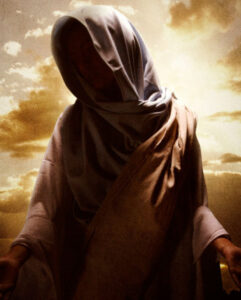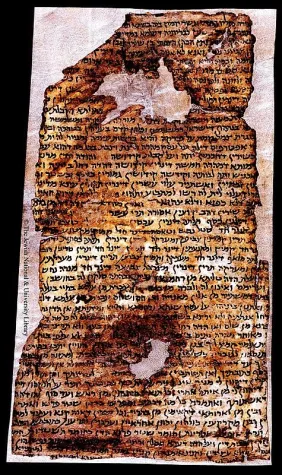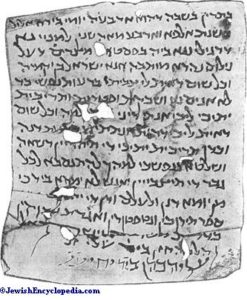Mary Was There Beginning to End
 Famed mother of Jesus, Mary was a witness throughout the exceptional life of her son, Jesus – the only one who was there for it all.[1] Like most mothers, every amazing detail about her son was memorable.
Famed mother of Jesus, Mary was a witness throughout the exceptional life of her son, Jesus – the only one who was there for it all.[1] Like most mothers, every amazing detail about her son was memorable.
Mentioned twice in Luke before Jesus turned 13, the Gospel says Mary “treasured all these things in her heart.”[2] Nativity accounts of Gospels of Matthew and Luke are able to present firsthand accounts based on Mary being an eyewitness.[3]
As a girl living in Nazareth, population of about 2000, she came of marriageable age at about 13 years old and became betrothed to Joseph.[4] Betrothal for Mary was no different than for any other Jewish girl…until she was visited by the angel Gabriel.
Turning from ordinary to extraordinary, Mary’s remarkable life took only a moment. Gabriel announced she would be impregnated by the Holy Spirit and would give birth to the Son of God.[5] No doubt, the message shocked her to the core.
Informed by Gabriel that Elizabeth was pregnant, too, Mary promptly traveled to visit her cousin. They something they had in common – special pregnancies.
Elizabeth had been married for many years, but had been barren. Even Zechariah, her husband who learned of her pregnancy from the Gabriel, still doubted the possibility of Elizabeth becoming pregnant because of her age.[6]
Merely a few days pregnant, even before Mary herself experienced any physical changes, Elizabeth confirmed Mary’s pregnancy the moment she arrived.[7]
Three months later when it was time for Elizabeth to give birth to her son, later known as John the Baptist, Mary went back home to Nazareth. She did not immediately tell Joseph she was pregnant.[8]
Eventually discovering her pregnancy and knowing he was not the father, Joseph assumed Mary had a paramour. It is safe to assume Mary’s secret pregnancy caused stress in their betrothal relationship.
Joseph considered a divorce, but before he took any action an angel paid him a visit delivering a message from God.[9] Having a change of heart, the message caused Joseph to decide that God’s divine plan trumped the difficult situation for himself.
As if things in Mary’s home life weren’t tough enough, as Mary was preparing to give birth any day, the Nazareth town crier announced a registration decree by Caesar August. Because of their lineage, the decree required Mary and Joseph on very short notice to trek some 90 miles away to Bethlehem, the ancestral home of King David.[10]
Matters got even worse in Bethlehem. When the couple arrived in the town, they found the inns were full and were forced to stay in a stable. While there, Mary went into labor and had to use a livestock manger for a crib.
Joy overcame the difficult circumstances with amazing events that followed. Heralded by a choir of angels, shepherds left their herds in the country to see Mary’s newborn baby.[11]
Later, an entourage of Magi came from a faraway country to visit their family. Bearing expensive gifts gold, frankincense and myrrh…and they worshipped her baby![12]
Topsy-turvy events of the past few months again took another dramatic turn again for the worse. Of all people, Herod, the King of Judea, wanted to kill her baby forcing Mary’s new family to journey through the desert to escape to Egypt.[13]
Finally things settled down after the death of Herod and the new family returned to Nazareth. Over the following years, Mary and Joseph raised a family of at least four boys and two girls.[14]
A stark reminder that their 12-year old son, Jesus, was distinctively different from his siblings came when they lost him for 3-4 days! Joseph and Mary eventually found Jesus in the Temple.[15]
Probably jarring the senses of his parents, their 12-year old son asked: “Why is it that you were looking for Me? Did you not know that I had to be in My Father’s house?”[16]
Knowing her son had special powers who could perform miracles, it suggests Jesus had done other miraculous things privately within their family. When a wedding party ran out of wine, Mary knew Jesus could save the event.
Mary asked her son to save the day and told servants to do whatever Jesus said. Not ready to publicly reveal his miracle capabilities and in-spite-of being a grown adult, Jesus did as his mother asked by performing his first publicly recorded miracle by turn pots of water to wine.[17]
At his home in Capernaum, Mary and her family tried to meet with Jesus, but they could not reach him because the crowd was too dense. Some people told Jesus his family was outside wanting to see him and Jesus responded by saying that he considered those around him to be his family.[18]
Next mention of Mary three years later was during the most dreadful of scenarios, all the more horrifying for a mother, as she watched her tortured son being executed by crucifixion.[19] What emotions she experienced can scarcely be imagined.
Much attention is made of Mary Magdalene’s Resurrection encounter at the tomb. Jesus’ own mother and family have to be better qualified to confirm or refute that Jesus was alive again after his death on the cross.[20]
James, one of the brothers of Jesus, believed he rose from the dead and was willing to die for his belief. According to Roman Jewish historian Josephus, James became a martyr that the resurrected Jesus is the Messiah:
“…he [Ananus] assembled the Sanhedrin of judges, and brought before them the brother of Jesus, who was called Christ, whose name was James, and some others, [or, some of his companions.] And when he had formed an accusation against them as breakers of the law, he delivered them to be stoned…” – Josephus, Antiquities of the Jews [21]
From her miraculous conception, the circumstances of his birth, many of his miracles, and his crucifixion to his Resurrection, Mary was the sole witness from the beginning to the end of the life of Jesus. Some of the incidents can be substantiated by sources outside of the Gospels – Roman historians, Judaism, astronomy, and archeology.
Does Mary’s witness account provide believable evidence that the appearance of Jesus fulfilled the prophecies about the Messiah?
Updated January 2, 2024.
This work is licensed under a Creative Commons Attribution-NonCommercial-NoDerivatives 4.0 International License.
REFERENCES:
[1] Luke 1:2.
[2] Luke 2:19; 2:51. CR Luke 1:66. NASB. NASB, NIV. Luke 2:19.
[3]Northcote, James Spencer. “The Life of Mary in the Gospels.” 1856-60. <https://www.salvemariaregina.info/SalveMariaRegina/SMR-182/LifeMary14.htm> “Who was With Jesus When He Ascended?” Pathos.com. 2017. <https://www.patheos.com/blogs/christiancrier/2015/12/15/who-was-with-jesus-when-he-ascended> “Mary.” SquareSpace.com. image. 2013. <http://static1.1.sqspcdn.com/static/f/498894/21585377/1357687844620/Mary-Mother-of-the-Christ-Myriam-Christian-Movie-Christian-Film-DVD-Odeya-Rush-Peter-OToole-Ben-Kingsley1.jpg?token=HQ84OGWo1X3XauVE74a6xoLFvXY%3D>
[4] “Nazareth.” New World Encyclopedia. 2018. <https://www.newworldencyclopedia.org/entry/nazareth> “Nazareth.” Jewish Virtual Library. 2019. <https://www.jewishvirtuallibrary.org/nazareth> Kiddushin 3b. Sefaria. <https://www.sefaria.org/Kiddushin.3b?lang=bi> “Marriage.” Judaism 101. <http://www.jewfaq.org/marriage.htm> “Majority.” Jewish Encyclopedia. 2011. <http://jewishencyclopedia.com/articles/10310-majority>
[5] Luke 1:26-35.
[6] Luke 1:39-45.
[7] Luke 1:8-25, 57-66.
[8] Matthew 1:56.
[9] Mathew 1:18. Net.bible.org. 2019. Greek text word “heurisko.” <http://classic.net.bible.org/strong.php?id=2147> Strong’s Concordance with Hebrew and Greek Lexicon. Eliyah.com. n.d. <http://www.eliyah.com/cgi-bin/strongs.cgi?file=greeklexicon&isindex=2147>
[10] Luke 2:1-6. Tarwacka, Anna. “The consequences of avoiding census in Roman law.” 2013. <https://www.academia.edu/5525859/The_consequences_of_avoiding_census_in_Roman_law>
[11] Luke 2:8-20.
[12] Matthew 2:1-12.
[13] Matthew 2:13-17.
[14] Matthew 13:55; Mark 3:31-34, 6:3; John 2:12; Acts 1:14.
[15] Luke 2:41-51.
[16] NASB.
[17] John 2:1-11. CR John 4:46.
[18] Matthew 12:46-50; Mark 3:31-34, Luke 8:21.
[19] John 19:25. CR Luke 23:49.
[20] Acts 1:12-14. CR John 2:12;
[21] Josephus, Flavius. Antiquities of the Jews. Trans. and commentary. William Whitson. The Complete Works of Josephus. 1850. Book XX, Chapter IX.4. <http://books.google.com/books?id=e0dAAAAAMAAJ&printsec=frontcover&source=gbs_ge_summary_r&cad=0#v=onepage&q&f=false>


